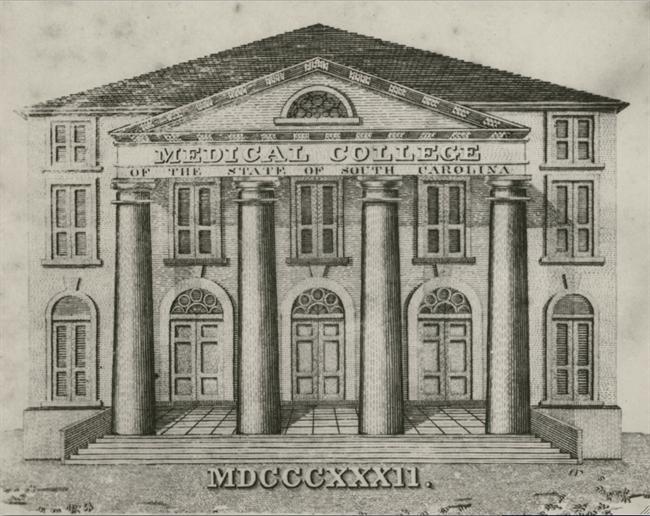Hundreds of grave sites are present throughout the historic city of Charleston, South Carolina. Not surprisingly, many of the thousands of buried bodies are historical figures who can easily be researched on to find information about their lives. That is exactly what our FYE class was assigned to do in this "Old Charlestonian" project. Dr. St. Julien Ravenel was who I chose to do my research on.
Ravenel was born December 15, 1819 in Charleston, South Carolina. He was the oldest child of merchant and ship owner John Ravenel and his wife Anna Eliza Ford. He lived in the city and finished grammar school there, before leaving for Morristown, New Jersey to continue his education. In 1840 he graduated from the Medical College in Charleston after studying medicine under J. E. Holbrook. Ravenel continued his studies for a summer in Philadelphia and a year at Paris, France. He was a well educated man and when he returned to Charleston he began to practice medicine and was named Demonstrator of Anatomy at the Medical College.
 |
| Medical College in Charleston, SC 1840 |
He then changed his mind about medicine and was an associate to Professor Louis Agassiz, studying microscopy, natural history, and physiology. This lead to him studying chemistry in 1852 at his Stony Landing Plantation along the Cooper River. He experimented with the production of lime from marl deposits located along the river banks. After cement was discovered under the limestone layers, in 1856 he partnered with Clement H. Stevens to establish the Colleton Lime Works at his plantation this company would provide most of the lime used by the southern states during the American Civil War.
War breaks out
 |
| Dr. St. Julien Ravenel grave Magnolia Cemetary |
In 1861 the Civil War broke out where yet again Ravenel used his medical and chemistry background to help him with his various careers. He volunteered with the Phoenix rifles and served as a private during the siege of Fort Sumter. Then he was commissioned as a surgeon with the 24th South Carolina infantry, under the command of Colonel Clement H. Stevens, who was his business partner. The following year, he was placed in charge of the Confederate Hospital and laboratory in Columbia, South Carolina that was used to manufacture nearly all of the South's medical supplies, including drugs and medicines. The Confederate Hospital held Confederate soldiers from Virginia and elsewhere were being treated.
Then in 1863, the first purpose-built torpedo boat was conceived and built near Charleston, South Carolina using private funding. Using an earlier concept of Ross Winans, Dr. Ravenel provided the initial design for the vessel and the construction was completed with the aid of David C. Ebaugh. Named the "David" a type of torpedo that was thirty feet long with a diameter of five and a half feet at its middle and was ballasted so as to float deeply in the water. This torpedo was used on October 5, 1863. The CSS David was used to attack the USS New Ironsides near Charleston Harbor.
Post War
After the war he returned home to Charleston where he continued to experiment with chemistry for improvement of agricultural conditions. He discovered the benefit of using phosphate of lime in agriculture. He was able to increase the cotton yield in one section of his plantation from 100–150 pounds per acre up to 300–400 pounds. In August, 1867, Ravenal and N. A. Pratt discovered a rich concentration of this mineral at Lambs, South Carolina.As a result, he helped to found the fertilizer manufacturer Wando Phosphate Company. Ravenel served as chemist to the larger phosphate companies. Among his accomplishments were the development of simpler fertilizer manufacturing techniques, a method of growing abundant short grain and hay on the sandy South Carolina coast.
 |
| 5 East Battery, Ravenel's home |
Personal Life
Right before war broke out he married writer and historian Harriott Horry Rutledge (1832–1912), the sole child of Edward Cotesworth Rutledge and Rebecca Motte Lowndes on March 20, 1851. Between 1852 and 1872, St. Julien and Harriott would have nine children and live in the inherited house from his parents at 5 East Battery in Charleston until his death. St. Julien Ravenel died of cirrhosis of the liver, March 15, 1882, at the age of 62 and was survived by his wife, four sons, and five daughters, he is buried in Magnolia Cemetary. 
